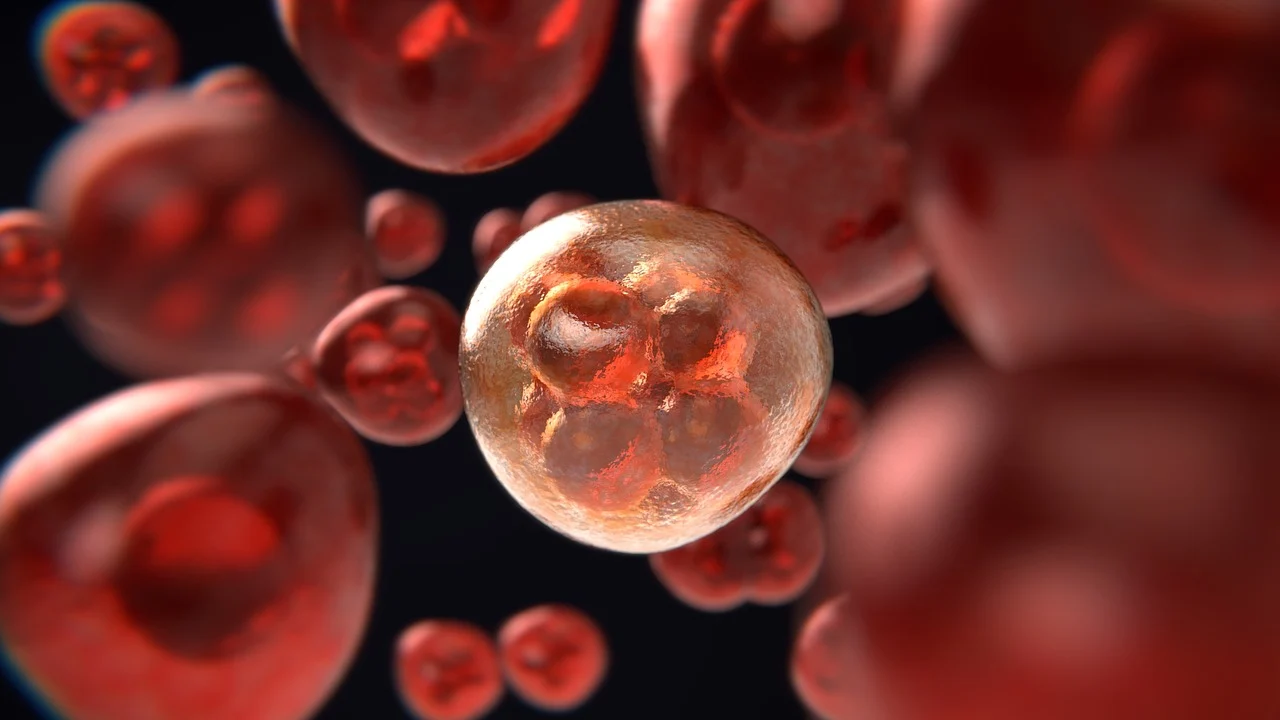The transplantation of undifferentiated embryonic stem cells into immunocompatible organs, in contrast to the transplantation of fetal or adult stem cells, produces teratomas or teratocarcinomas.
The risk of tumor formation decreases with advancing maturation and, according to general opinion, can be reliably avoided by pre-differentiating the stem cells. This hypothesis is supported by numerous studies in which no formation of tumors was observed after transplantation of predifferentiated embryonic stem cells.
However, these experiments mainly involved xenologous transplants, i.e. animal experiments in which pre-differentiated embryonic stem cells from one species (e.g. mouse or human) were transferred to another species. In a more recent study, however, it turned out that in the xenological system not only the transplantation of predifferentiated but also the transplantation of undifferentiated embryonic stem cells did not show any tumor formation (1).
In this study, published in the Proceedings of the National Academy of Science, undifferentiated murine embryonic stem cells were transplanted into the brain of immunosuppressed rats. A stroke was experimentally induced in these animals by occlusion of the middle cerebral artery.
The stem cells migrated from the transplantation site via the corpus callosum into the opposite hemisphere affected by the stroke and, after spontaneous differentiation into neurons and glial cells, settled in the peripheral zone of the infarction. These findings raised the hope that in the brain — in contrast to
other body organs — even the transplantation of undifferentiated embryonic stem cells does not lead to tumor formation, but to a disease-oriented, self-controlled replacement of the lost brain cells.
However, the repetition of this experiment in the homologous system — ie the transplantation of murine stem cells into the brain of mice — revealed that this is not the case (2). Instead, not only after transplantation of undifferentiated, but also after transplantation of predifferentiated stem cells, high-grade malignant teratocarcinomas were induced in almost 100 percent, according to the work published in the Journal of Cerebral Blood Flow and Metabolism. The high tumor incidence was independent of gender, age, mouse strain or concomitant immunosuppression.
The small number of undifferentiated stem cells, which was sufficient for tumor induction, was also astonishing: as few as 500 undifferentiated cells developed into macroscopically visible tumors within two weeks. This also explains the tumor induction of the pre-differentiated cells: although the degree of purity of the nestin-positive/Oct4-negative cells used was more than 99 percent, there were obviously still enough undifferentiated cells to trigger tumor growth.
The reason for the striking difference in the tumor risk of homologous and xenologous stem cell transplants is currently unknown. If, as is to be feared, this is a fundamental problem of homologous transplantation, this would have serious consequences for the safety assessment of human embryonic stem cells. Since human stem cells can only be tested preclinically for their tumorigenicity in the xenologic system, their behavior under homologous clinical conditions cannot be predicted. With the test methods currently available, it will therefore not be possible to check the safety of embryonic human stem cells before they are used clinically. hsm
Literature
1. Hoehn M, Küstermann E, Blunk J, Wiedermann D, Trapp T, Wecker S, Föcking M, Arnold H, Hescheler J, Fleischmann BK, Schwindt W, Bühl C: Monitoring of implanted stem cell migration in vivo: A highly resolved in vivo magnetic resonance imaging investigation of experimental stroke in rat. Proc Nat Acad Sci (USA) 2002; 99: 16267–16272.
2. Erdö F, Bührle C, Blunk J, Hoehn M, Xia Y, Fleischmann B, Föcking M, Küstermann E, Kolossov E, Hescheler J, Hossmann K‑A, Trapp T: Host-dependent tumorigenesis of embryonic stem cell transplantation in experimental stroke. J Cereb Blood Flow Metab 2003; 23: 780–785.
Prof. Dr. Konstantin‑A. Hossmann, Max-Planck-Institut für neurologische Forschung, Gleueler Straße 50, 50931 Köln, E‑Mail: hossmann@mpin-koeln.mpg.de
Source
www.aerzteblatt.de/archiv/38906/Tumorrisiko-embryonaler-Stammzellen

